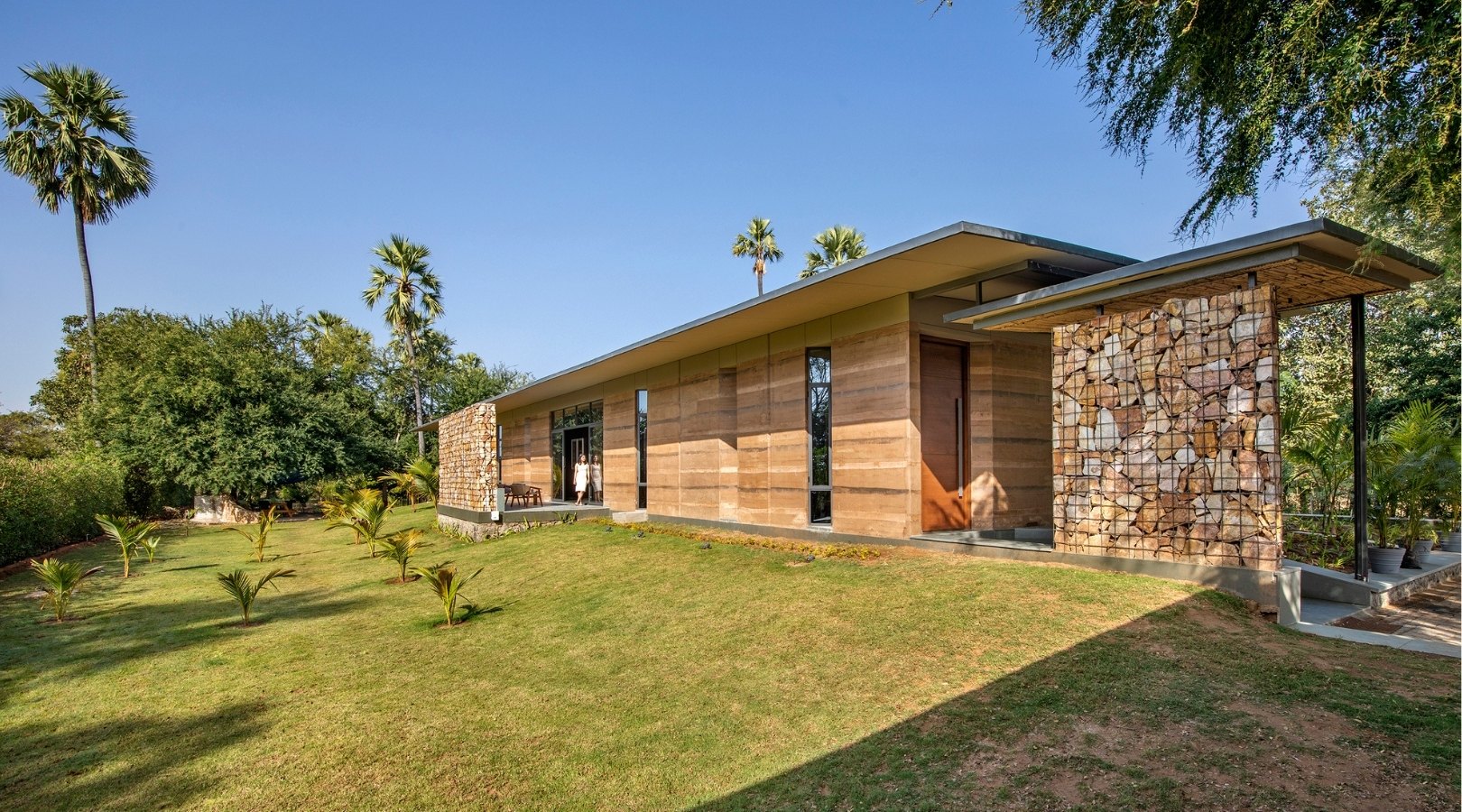
Earth House: A Residence Designed on Sustainability
Given the environmental problems that the world is facing, sustainable architecture has been a trending practice among architects globally. It’s evident in various establishments, from public spaces to family homes. The Earth House in India sets an example for families to readapt to sustainable living practices influenced by the past.

Designed by Art and Architecture Associates, the essence of the house focuses on demonstrating the built environment’s opportunities for addressing the global climate crisis. The architect explained they had taken a conscientious decision to weave in nature through their effort to construct a net positive home composed of Rammed Earth together with other natural materials excavated from the site.
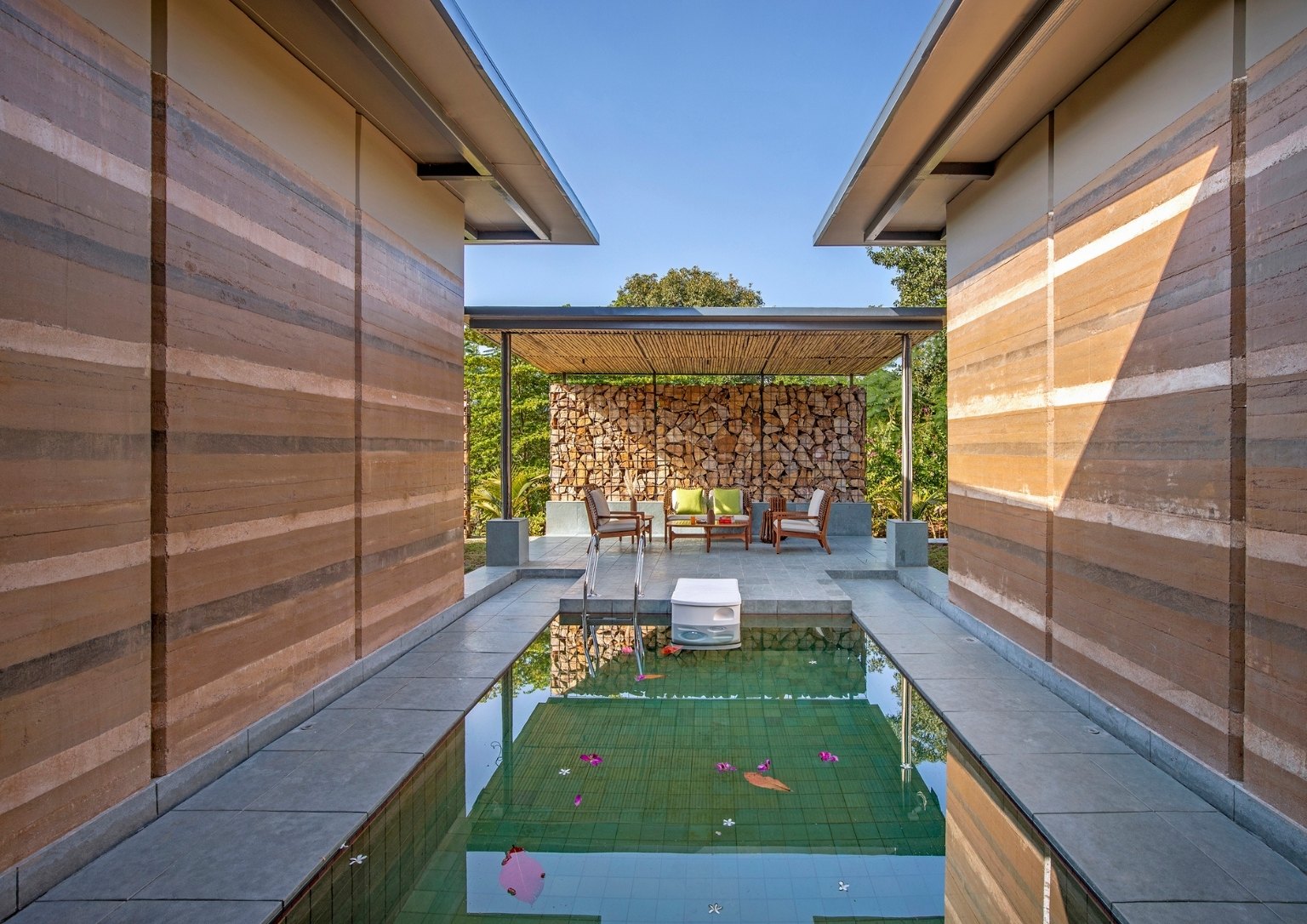
A Sustainable Residence
Art and Architecture Associates understands the consequences of climate change. That is why it becomes more vital for them to focus their efforts on minimizing carbon footprint and promoting the sustainability of cities. It is crucial to find the balance between form and function while staying environmentally responsible and sustainable.
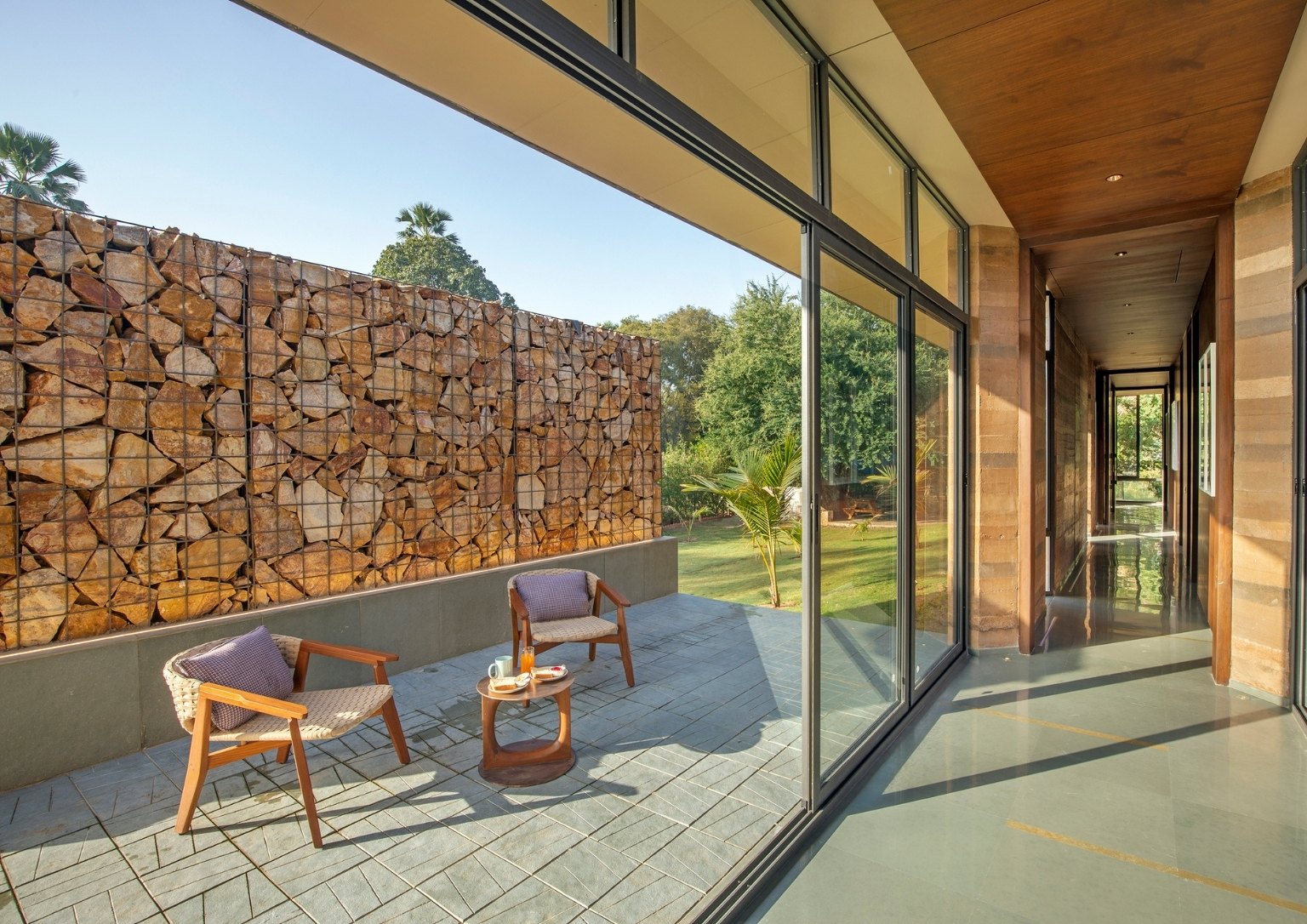
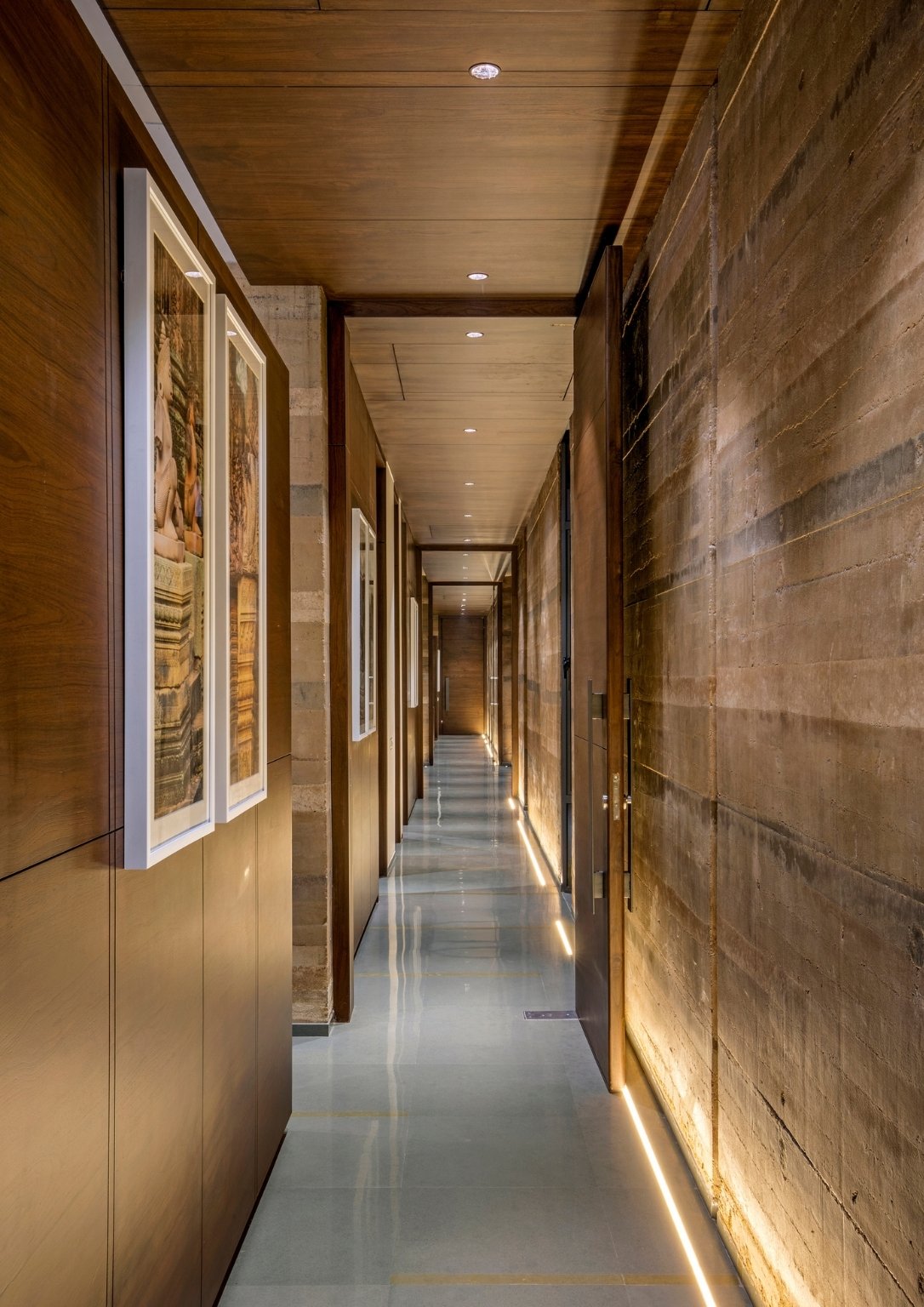
Several factors contribute to the sustainability of a house. Energy usage, for instance, plays a vital role in making a residence eco-friendly. Earth House adopts passive sustainable strategies like considering sun orientation and sitting the house to face north to maximize daylight and natural ventilation that cut energy requirements for the house.
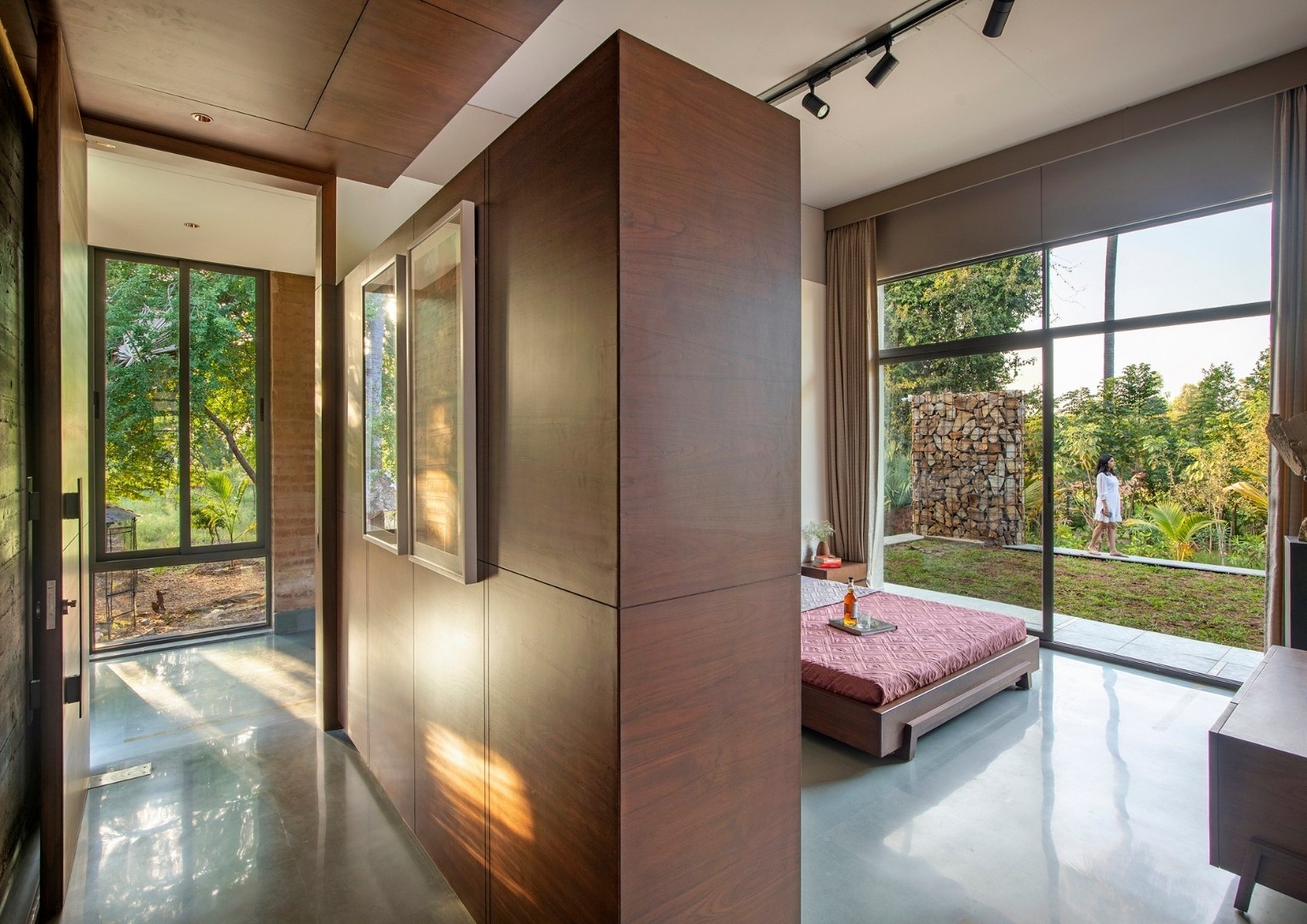
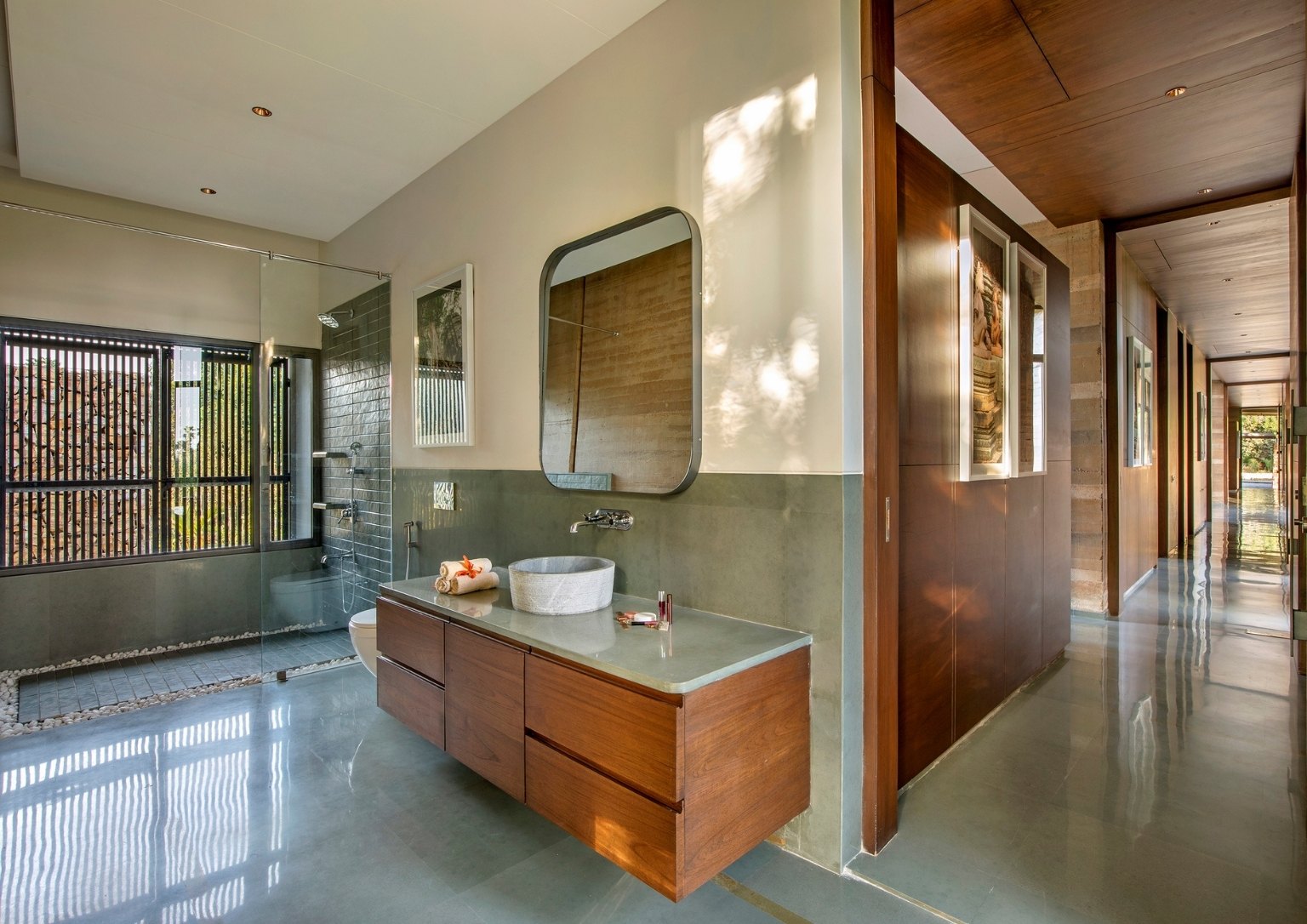
The choice of materials is another factor that promotes sustainability. The architect purchased all materials for furniture and finishes from companies that use environmentally responsible manufacturing techniques and recycled materials. The gabion walls of the house are composed of local rocks readily available. The walls help secure the house and provide enough privacy.

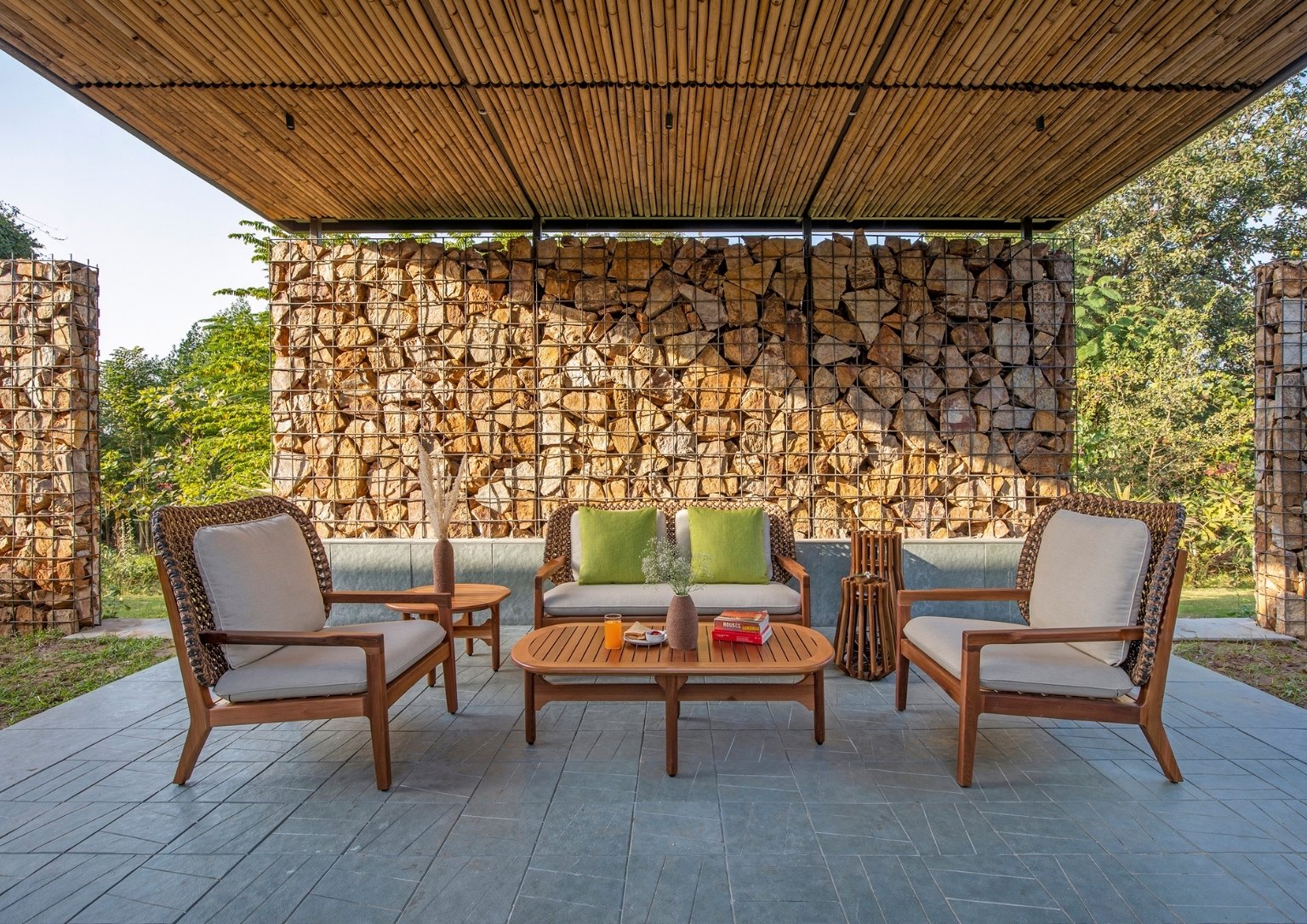
Adapting to The Environment
Earth House is located in the middle of expansive farmlands. The 3000-square foot residence aims to blend seamlessly among its habitat and natural environment. It also features a building skin, thick with earth walls that minimize solar heat gain. They keep the temperature seven to 10 degrees cooler than the outside in the tropical climate of Gujarat.
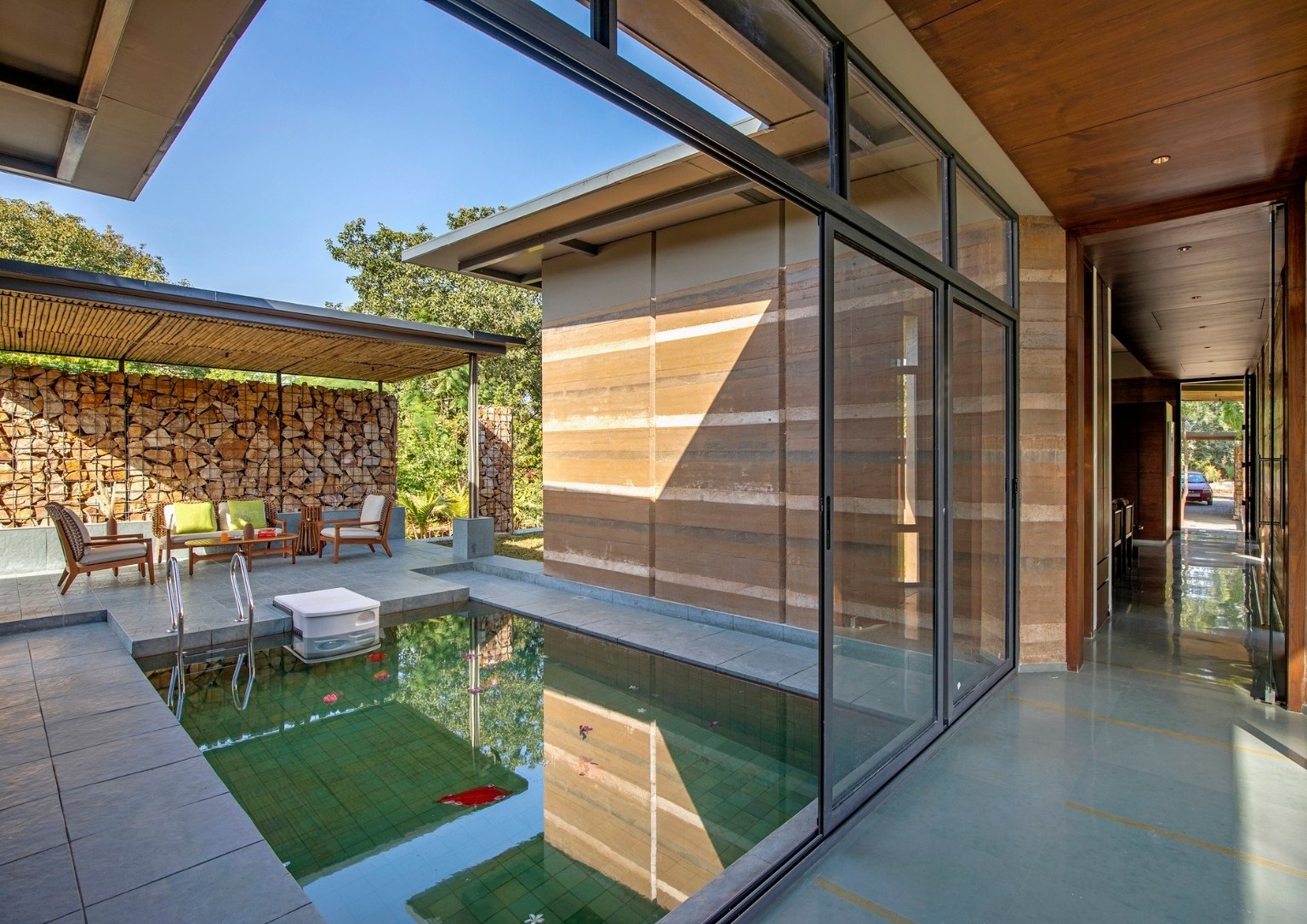
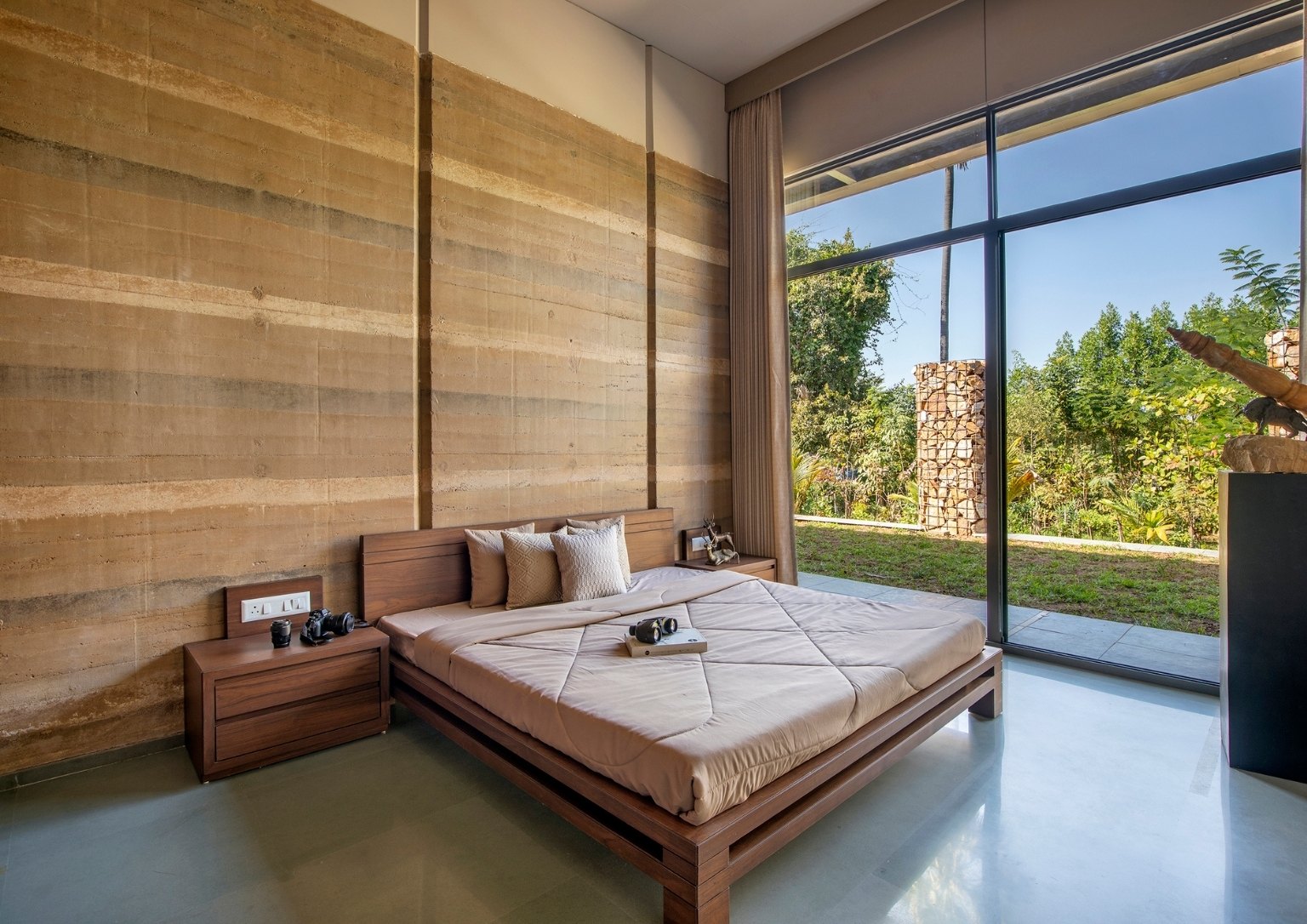
As for the layout, Earth House has a simple one with three bedrooms and living spaces separated on either side with the leisure space of a pool and a gazebo. It has an optimum building size and leaves a minimal footprint on the site area. The house also features an inclined roof that captures maximum solar energy to replenish and produce electricity for the place.
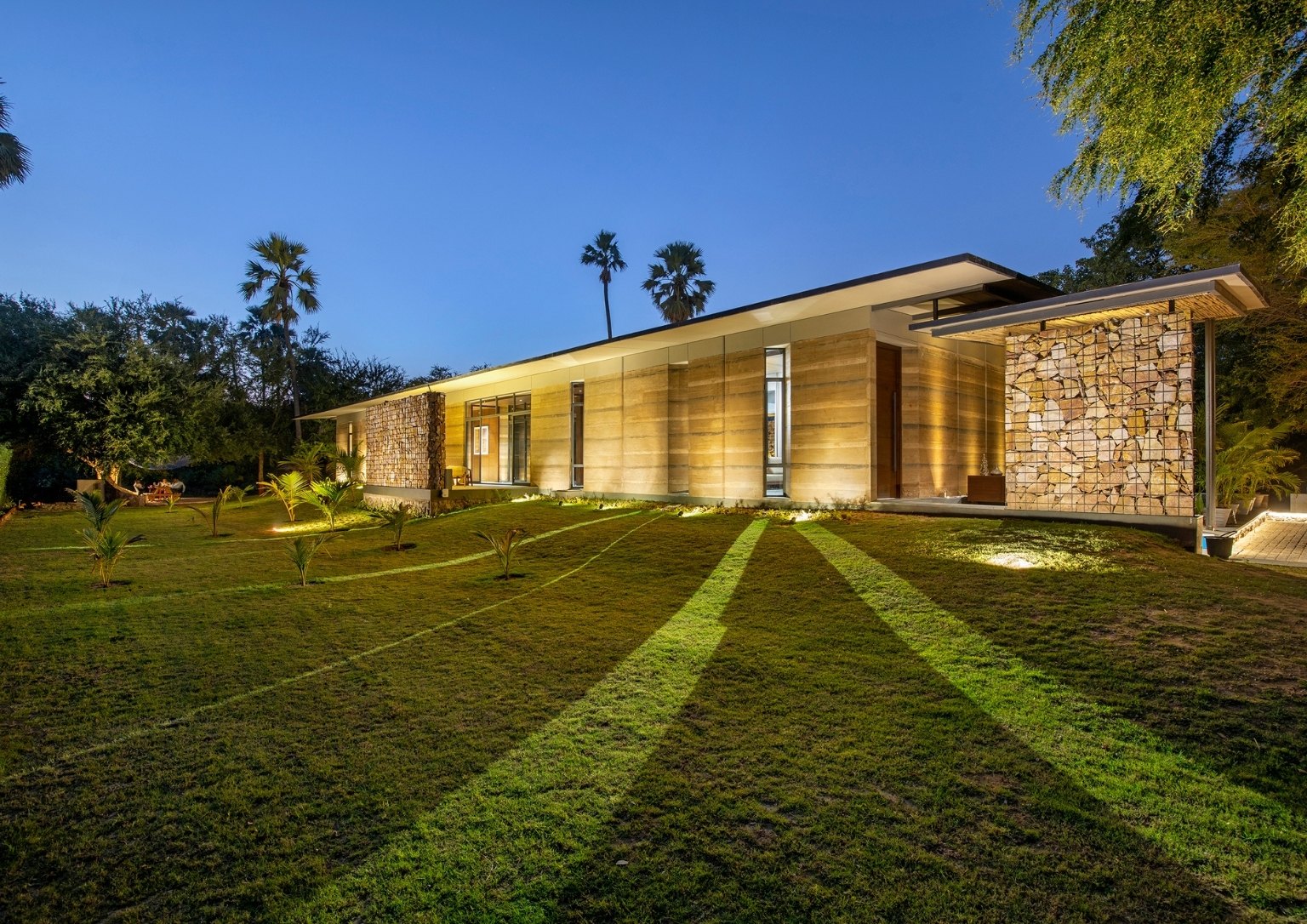
The architect explained that landscaping choices were native to the area, inevitably reducing irrigation needs. They also carefully selected plants local to the place. Moreover, Earth house is surrounded by Miyawaki forest, an organic farm, and a mango orchard. Impressive foliage shades the roof, reducing solar heat gain inside the house.
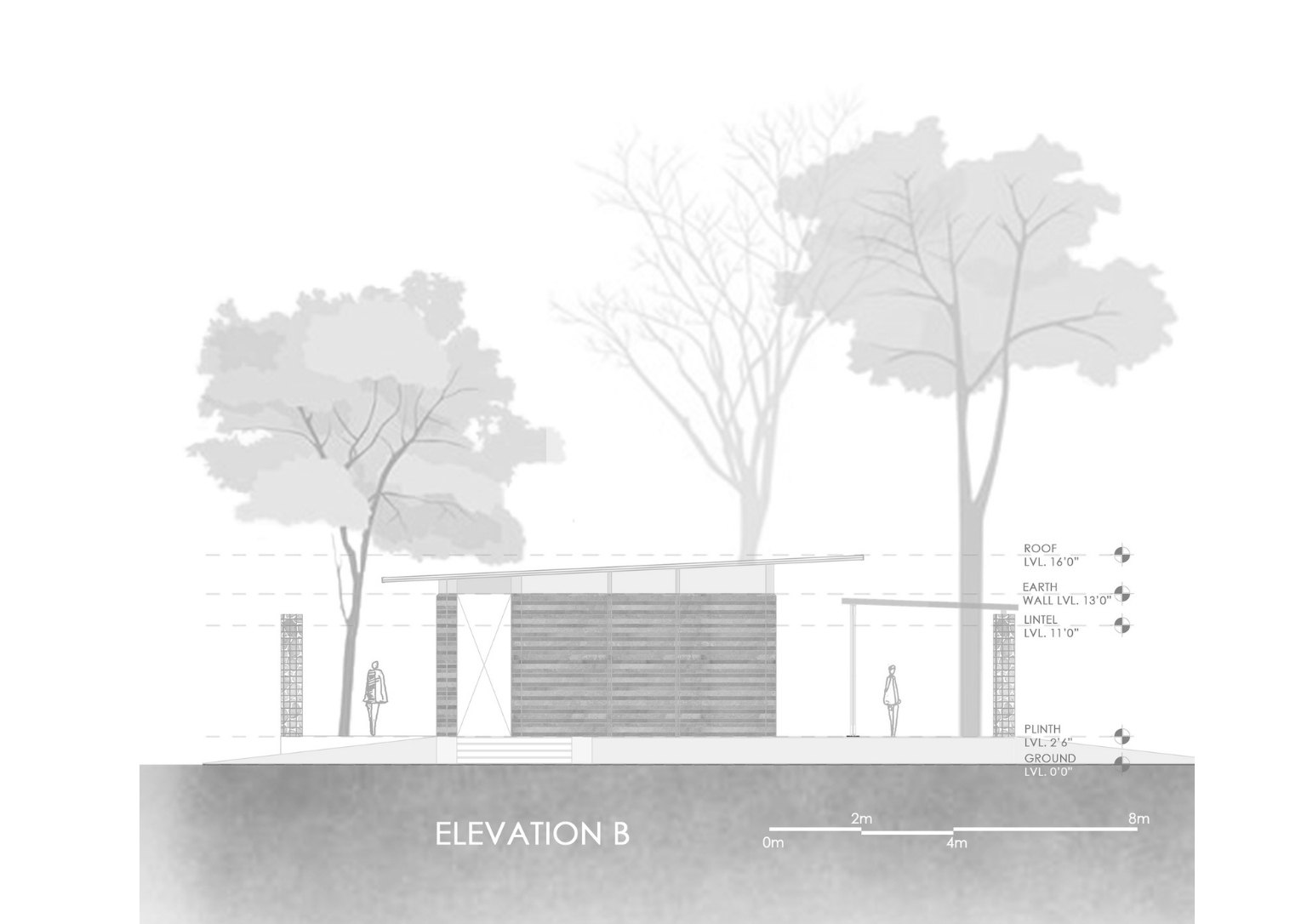
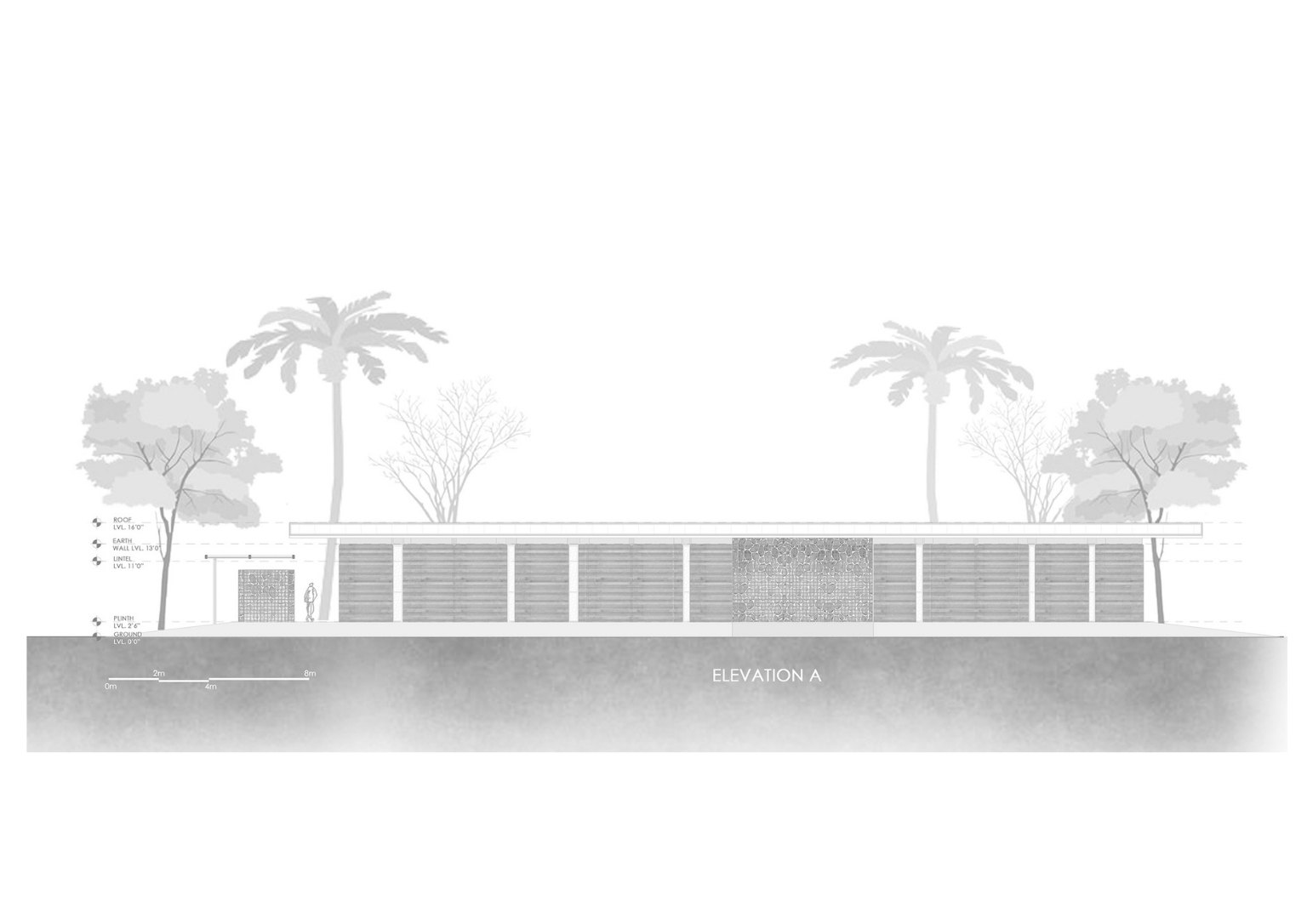

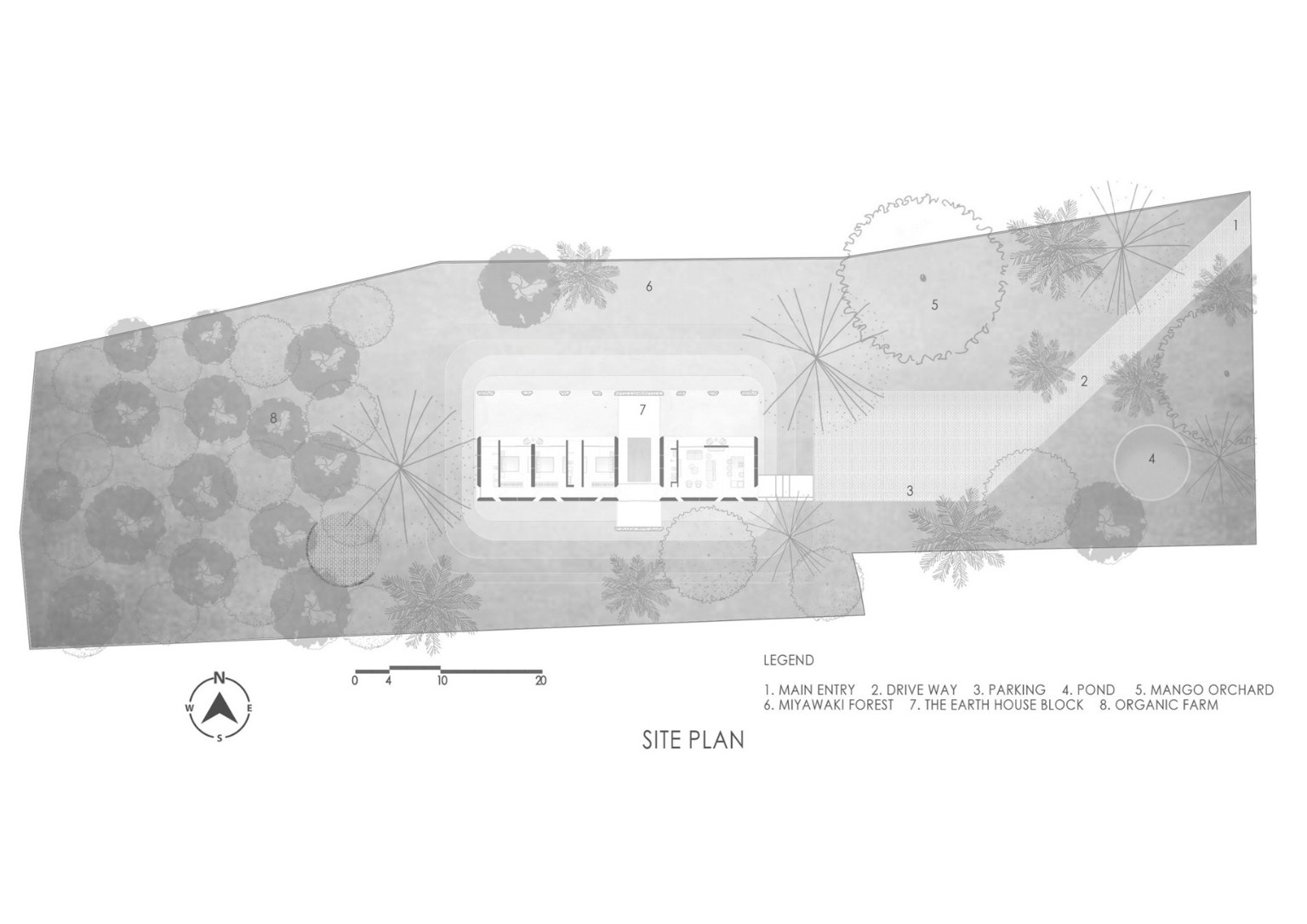
Earth House is not only sustainably designed but also remains sustainable over time. It produces its food, and electricity, and harvests water from the abundant rainfall.
Photos by Tejas Shah


